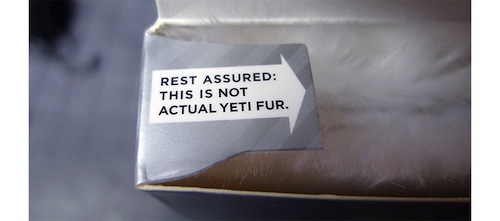Each December, Saks Fifth Avenue signals the beginning of the season of warmth, joy and supersized spending with the unveiling of its holiday window display. The now iconic dioramas depicting a new take on a winter wonderland each year have become a prime destination for New York’s annual influx of year-end tourists, seeking a high dose of holiday spirit.
This past year, Saks’ holiday display was entirely based on Art Center alum, Stefan Bucher‘s children’s book, The Yeti Story. The luxury department story commissioned him to create a holiday book, centered around a Yeti reputed to live on the roof of the flagship store on Fifth Avenue. Here Bucher (Advertising ’96) takes us behind the scenes to reveal the origin story of his encounter with the furry mythic beasts with an infinitely high cold tolerance.

The Yeti Story — 36 pages, fur cover, die-cut silver slipcase, 8 x 8 in. (20.3 x 20.3 cm)
Every year Saks Fifth Avenue publishes a children’s book for the holidays that’s available exclusively at their stores and through their website. Following the success of the plush Yeti I designed for them in 2011, Saks creative director Terron Schaefer and his team asked me back for another round. In addition to designing a new teenage Yeti for 2012, I got to create the origin story of the Yeti and how he came to New York.
For years, Saks has projected snowflakes on the façade of their flagship store in New York as part of their holiday decoration. In 2011 their design partners at Pentagram created the book “Who Makes The Snow?” which introduced the idea that a family of Yetis is living on the roof of Saks, and that they are the ones making the snow that falls down the side of the building. Michael Bierut was kind enough to recommend me for the job of developing the main Yeti character. Which is pretty much the best recommendation for the best job with the best client I could imagine.
This year we find out how the first Yeti came to live up on the roof of Saks. It’s a classic immigrant’s tale that starts in a Siberian snow factory in the early 1950s, and leads a frustrated young snow artist around the world to seek his fortune in New York. Along the way the Yeti has nerdy adventures, finds himself in grand locations, and ends up overcoming a few major character-building obstacles, too. Oh, and did I mention that the whole thing rhymes?
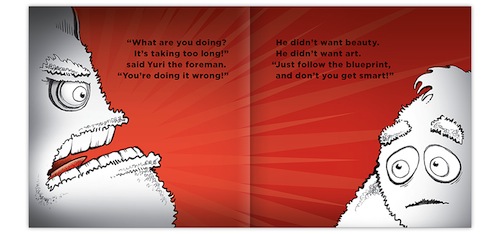
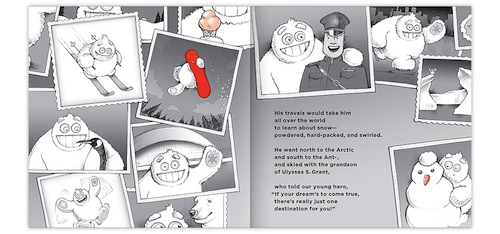
Is that the Yeti with the grandson of Ulysses S. Grant? You know it is!
Is that the Yeti with the grandson of Ulysses S. Grant? You know it is!
Peppering the story with nerdy little details was one of the best parts of this project. Most of them sprang from the fact that I wanted the story to be accurate to its time period. If anything popped up that was too new, but also too fun to take out, I had to do some retcon work. For instance, the Yeti built himself that spiffy red snowboard, then gave it to a friend, who later turned into one of the actual inventors of the snowboard.
The Yeti was also present at the construction of MIT’s Kresge auditorium, because MIT was his mom’s alma mater. And, of course, the Yeti family was friends with architect Eero Saarinen, whom they regarded as a very talented igloo shaper.
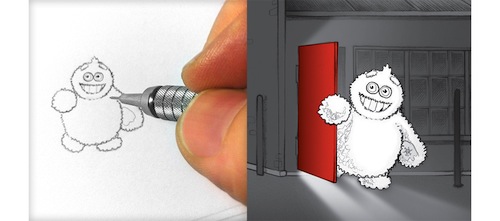
The trick for fluffiness: Draw the Yeti much smaller than his final size in print. Draw the rest much bigger.
The trick for fluffiness: Draw the Yeti much smaller than his final size in print. Draw the rest much bigger.
Needless to say, the document the Yeti hands in at Ellis Island is based on an actual U.S. immigration form of the period. It’s filled out correctly, too—his eye color is black and white, his complexion is furry—and addressed to the proper circuit court.
The Saks team was all too happy to egg me on. “Maybe there should be stickers on the foreman’s clipboard! Can you put more stuff on the walls? Can there be a flag on the factory igloo?” In fact, the whole book is so full of nerdy inside jokes that we added an explanatory insert of Yeti Secrets in the back. Where “The Lord of the Rings” had the Silmarillion, we have the Yetigorium. And that still doesn’t cover the hidden references to my other work and to the number 344. There are two of them in this spread alone:
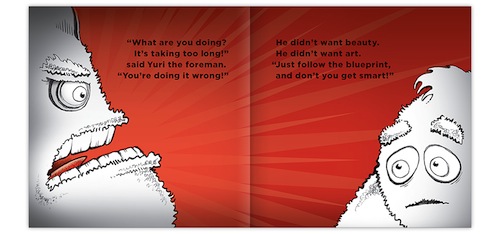
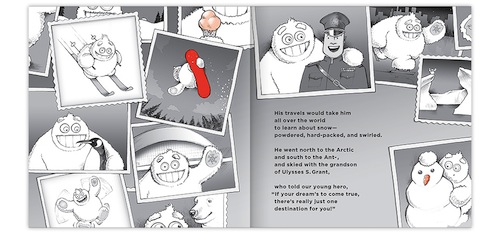
This is not yet the happy end. There are four more pages after this. Because I paced it like the movie A.I.
This is not yet the happy end. There are four more pages after this. Because I paced it like the movie A.I.
The fun continues on the box, too. It was a return to the aesthetic of my early CD design work: “Pack little goodies everywhere. When will you get another chance to do this?” So every flap of the box got its own Easter egg. Here is a little sampling:
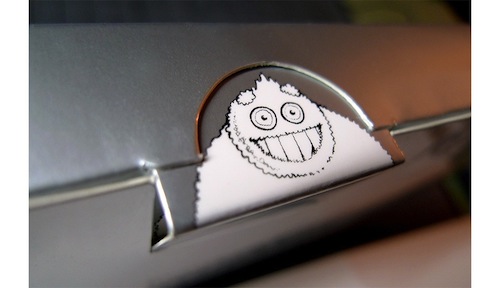
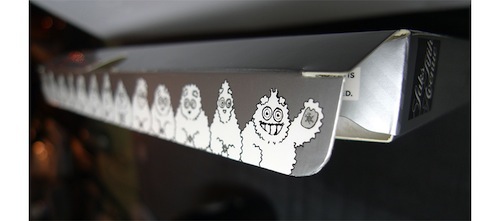
So many bonus Yetis, presaging the beginning of the tale, shown at the top of this page.
So many bonus Yetis, presaging the beginning of the tale, shown at the top of this page.
I spent an inordinate amount of time working on the printing plates for this box. The book itself took a long time to finish, but I didn’t want the exterior to suffer because of it. I knew there wouldn’t be time for lengthy revisions, so I wanted to make sure everything would print beautifully from the get go. Which it did. (Phew!) There were still a few tweaks to the content, but that box really came together well!
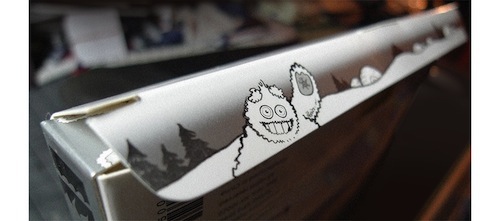
A look back at the Yeti’s home village on the bottom flap.
A look back at the Yeti’s home village on the bottom flap.
Lastly, let me show you a little visual reference that didn’t make it into the book. When asked to design the aforementioned flag for the factory igloo, I thought I should create a Yeti version of El Lissitzky’s 1919 poster “Beat The Whites With The Red Wedge!” Once installed atop the Kemerovo Snow & Ice workshop, it did look a bit too threatening, so we just kept the snowflake part. The six points of the snowflake represent the six founders of the workshop. The six triangles represent 1080° of interior angles.
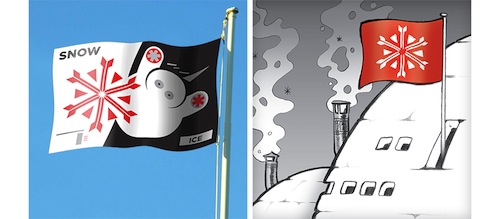
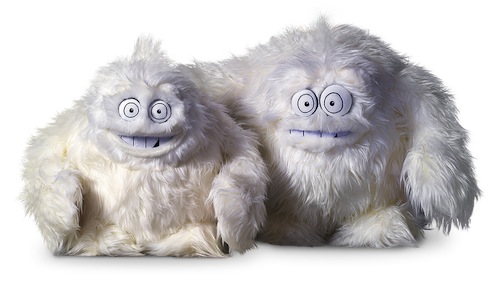
The 2012 Yeti with his proud forebear, turned into plush once again with the expert help of Kate Clark and Peter Doodeheefver at Yottoy. This year’s Yeti is a bit happier. The bigger guy is more like me. He’s a worrier.

